Front Case Half
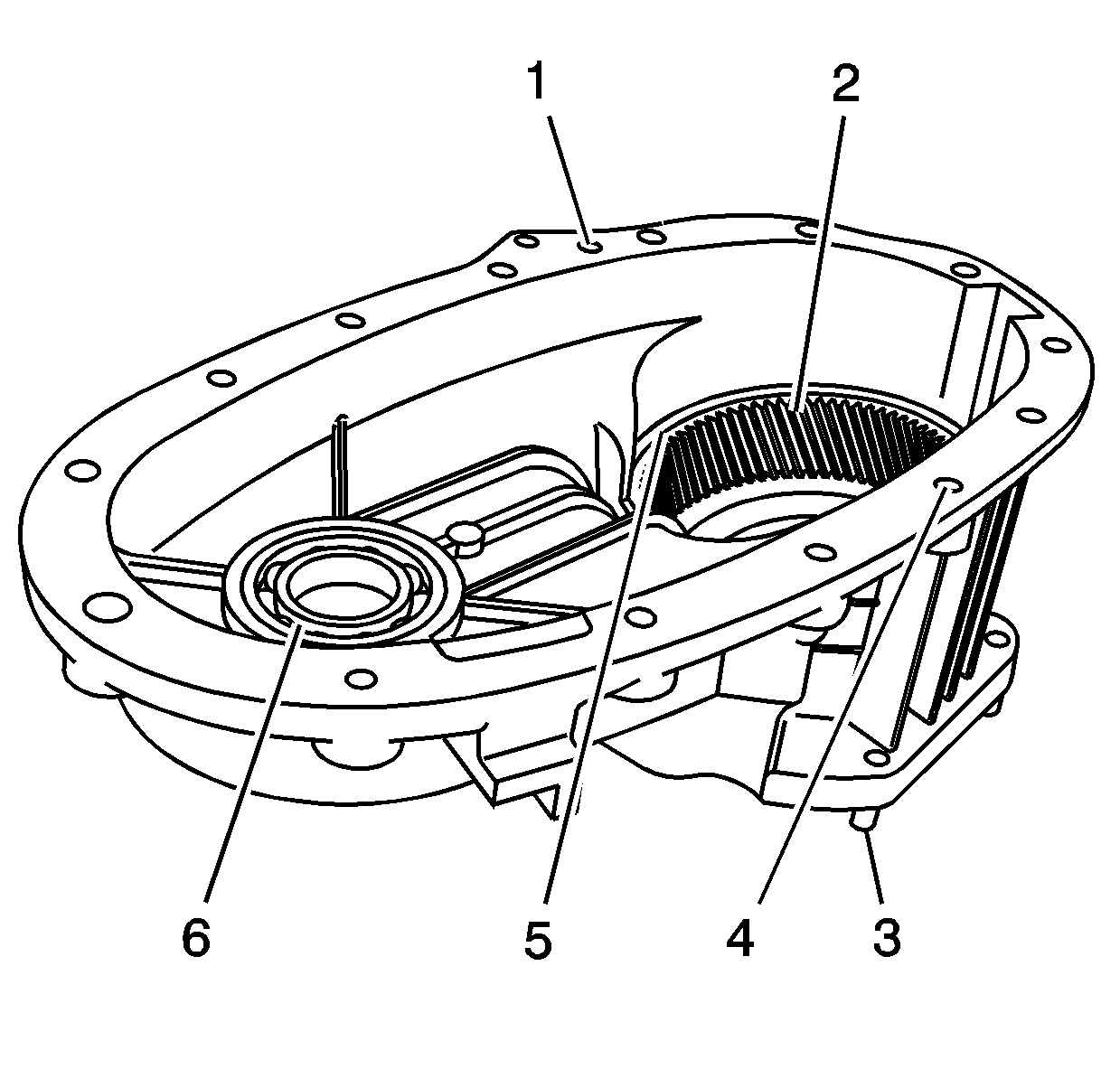
- Clean the front case half in cleaning solvent and air dry.
Notice: Refer to Machined Surface Damage Notice in the Preface section.
- Remove the sealer from the case sealing surfaces.
- Inspect the front output shaft front bearing (6) for the following conditions:
- Replace the front output shaft front bearing if any of the above conditions are found. Refer to
Transfer Case Disassemble
and
Transfer Case Assemble
.
- Inspect the case for spun bearings.
- Replace the case if a bearing has spun.
- Inspect the case for being broken or cracked.
- Replace the case if it is broken or cracked.
- Inspect the sealing surfaces (1) for damage.
- Repair small scratches or nicks with a soft stone.
- Inspect the front case to transmission case mounting surface for damage.
- Inspect the case threaded bolt holes (4) for damage.
- Repair any damaged threads.
- Inspect the transmission to transfer case studs (3) for damage.
- Replace any damaged studs.
- Inspect the retaining ring (5) of the annulus gear to ensure it is properly seated. Do not remove the retaining ring.
- Inspect the annulus gear (2) for the following conditions:
| • | Debris embedded in the root of the teeth |
- Replace the front case half if the annulus gear is damaged.
Rear Case Half
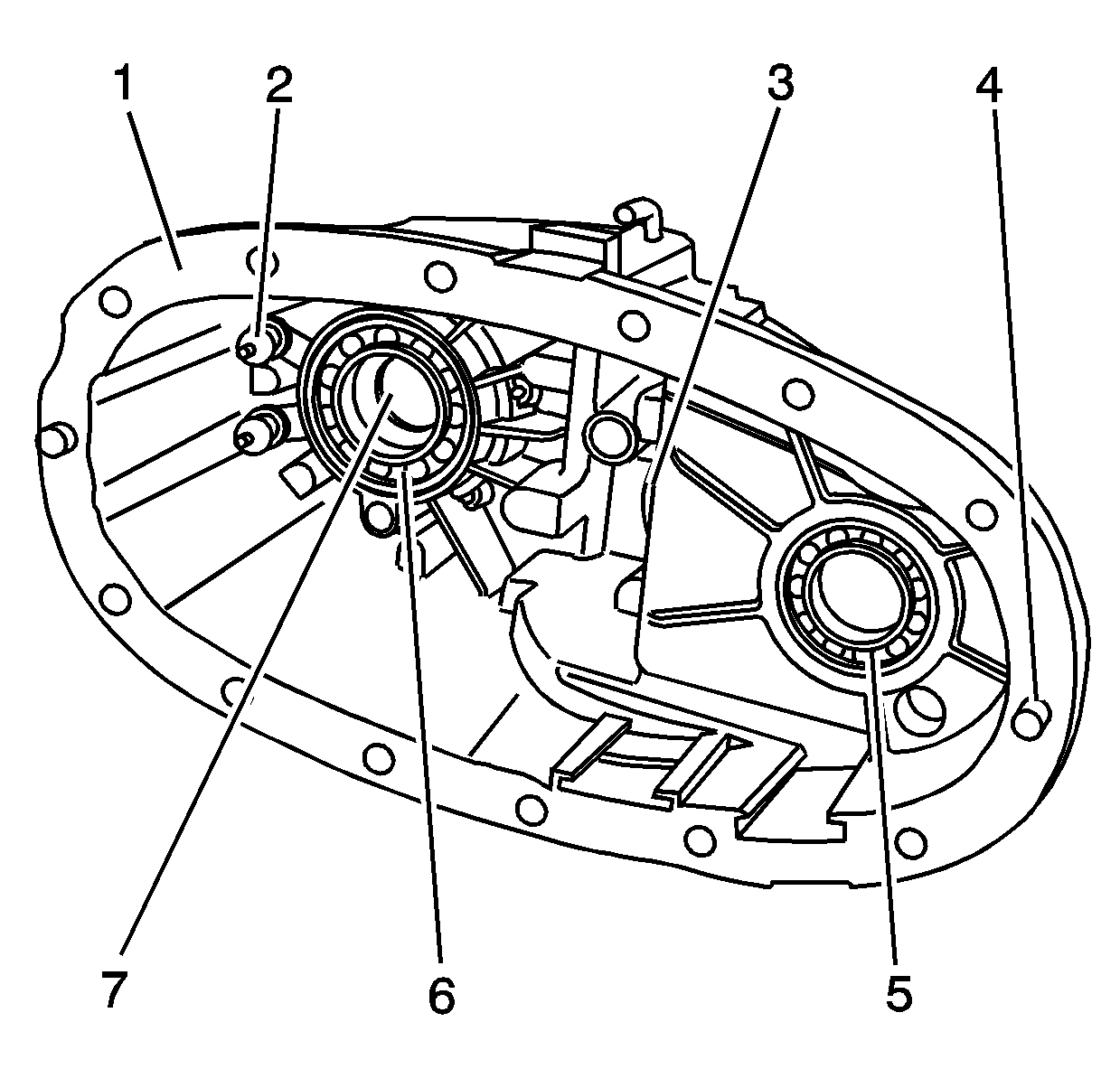
- Clean the rear case half in cleaning solvent and air dry.
Notice: Refer to Machined Surface Damage Notice in the Preface section.
- Remove the sealer from the case sealing surfaces.
- Inspect the front output shaft rear bearing (5) for the following conditions:
- Replace the front output shaft rear bearing if any of the above conditions are found. Refer to
Transfer Case Disassemble
and
Transfer Case Assemble
.
- Inspect the rear output shaft bearing (6) for the following conditions:
- Replace the rear output shaft bearing if any of the above conditions are found. Refer to
Transfer Case Disassemble
and
Transfer Case Assemble
.
- Inspect the case for spun bearings.
- Replace the case if a bearing has spun.
- Inspect the control actuator lever shaft bearing and seal (3) for the following conditions:
- Replace the control actuator lever shaft seal and bearing if any of the above conditions are found. Refer to
Transfer Case Disassemble
and
Transfer Case Assemble
.
- Inspect the case for being broken or cracked.
- Replace the case if it is broken or cracked.
- Inspect the sealing surfaces (1) for damage.
- Repair small scratches or nicks with a soft stone.
- Inspect the case threaded bolt holes for damage.
- Repair any damaged threads.
- Inspect the dowel pins (4) for being loose or missing.
- Repair or replace any damaged dowel pins.
- Inspect the oil pump bushing bore (7) for scoring or damage.
- Replace the case if the oil pump bushing bore is damaged.
- Inspect the clutch lever studs (2) for wear.
- Replace the case if the clutch lever studs are worn.
Oil Pump Suction Pipe Assembly
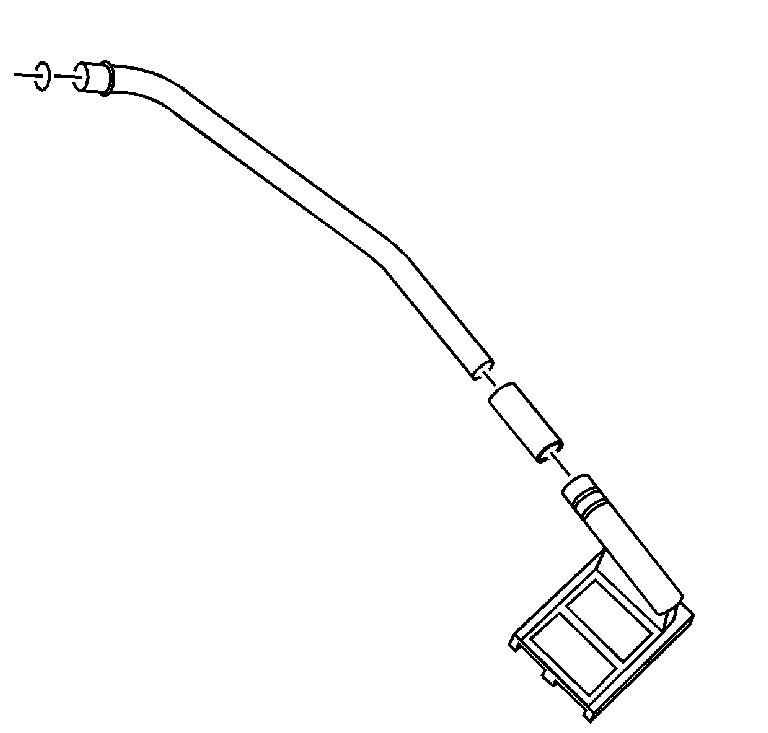
- Remove the oil pump suction pipe and the oil pump suction hose from the oil pump
screen.
- Clean the pipe, hose, and screen in cleaning solvent and air dry.
- If the screen is embedded with debris, replace the screen.
- Inspect the hose for cracking or tears.
- Replace the hose if faulty.
Rear Extension
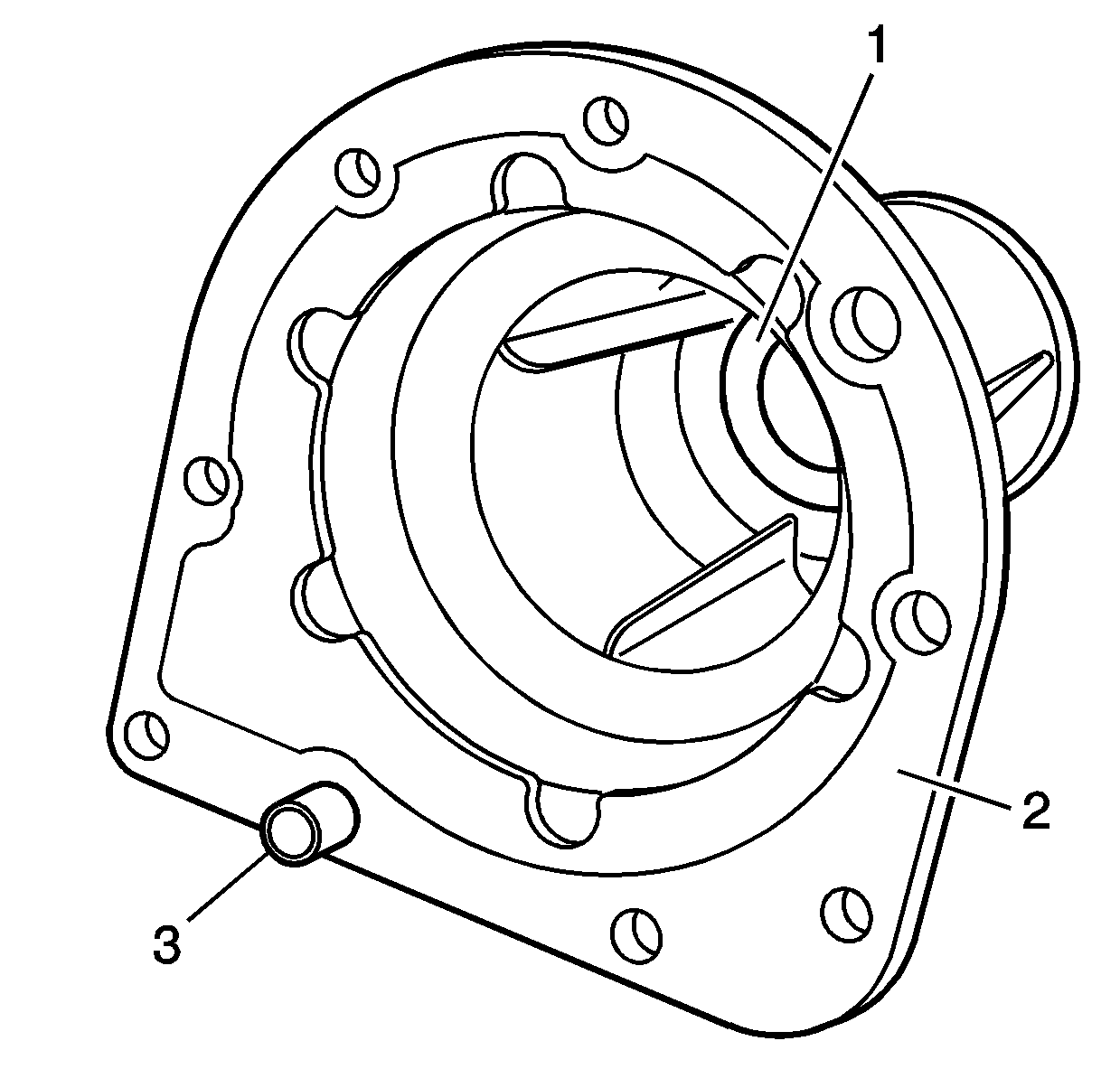
- Clean the rear extension in cleaning solvent and air dry.
Notice: Refer to Machined Surface Damage Notice in the Preface section.
- Remove the sealer from the extension sealing surfaces (2).
- Inspect the extension for being broken or cracked.
- Replace the extension if it is broken or cracked.
- Inspect the sealing surfaces for damage.
- Repair small scratches or nicks with a soft stone.
- Inspect the dowel pins (3) for being loose or missing.
- Repair or replace a damaged dowel pin.
- Inspect the rear extension bushing (1) for scoring and excessive wear.
- Replace the rear extension bushing if damaged or worn. Refer to
Transfer Case Disassemble
and
Transfer Case Assemble
.
Rear Output Shaft
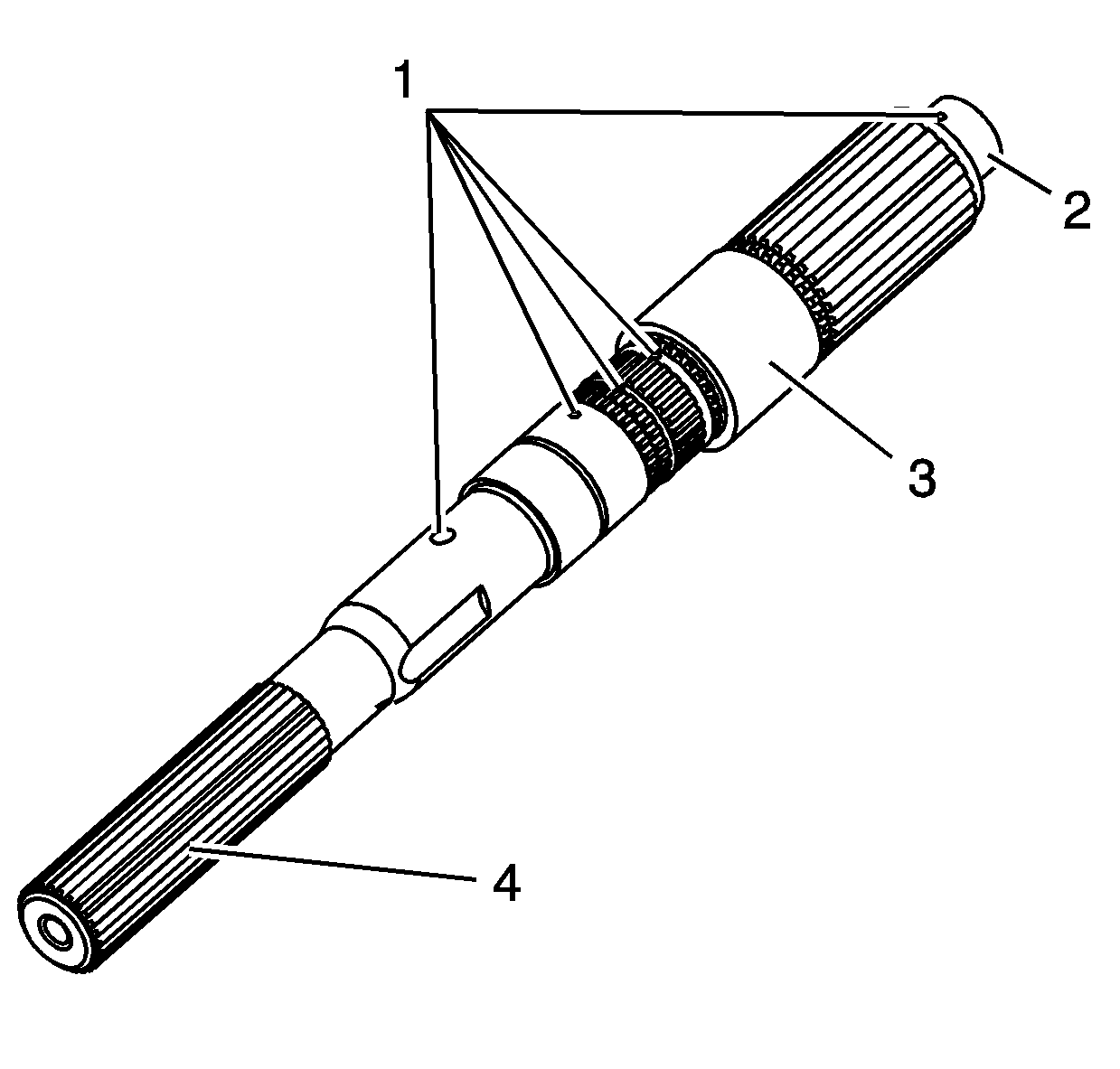
- Clean the rear output shaft in cleaning solvent.
- Clean the rear output shaft oil galleries (1) and air dry.
Important: Do not attempt to smooth any roughness in the bearing journals or seal surfaces.
- Inspect the input gear thrust bearing surface (2) and the clutch housing bearing surface (3) for the following conditions:
- Inspect the rear output shaft splines (4) for damage or excessive wear. Witness marks at the location of the gears is normal.
- Replace the rear output shaft if any of the above conditions are found.
Clutch Components
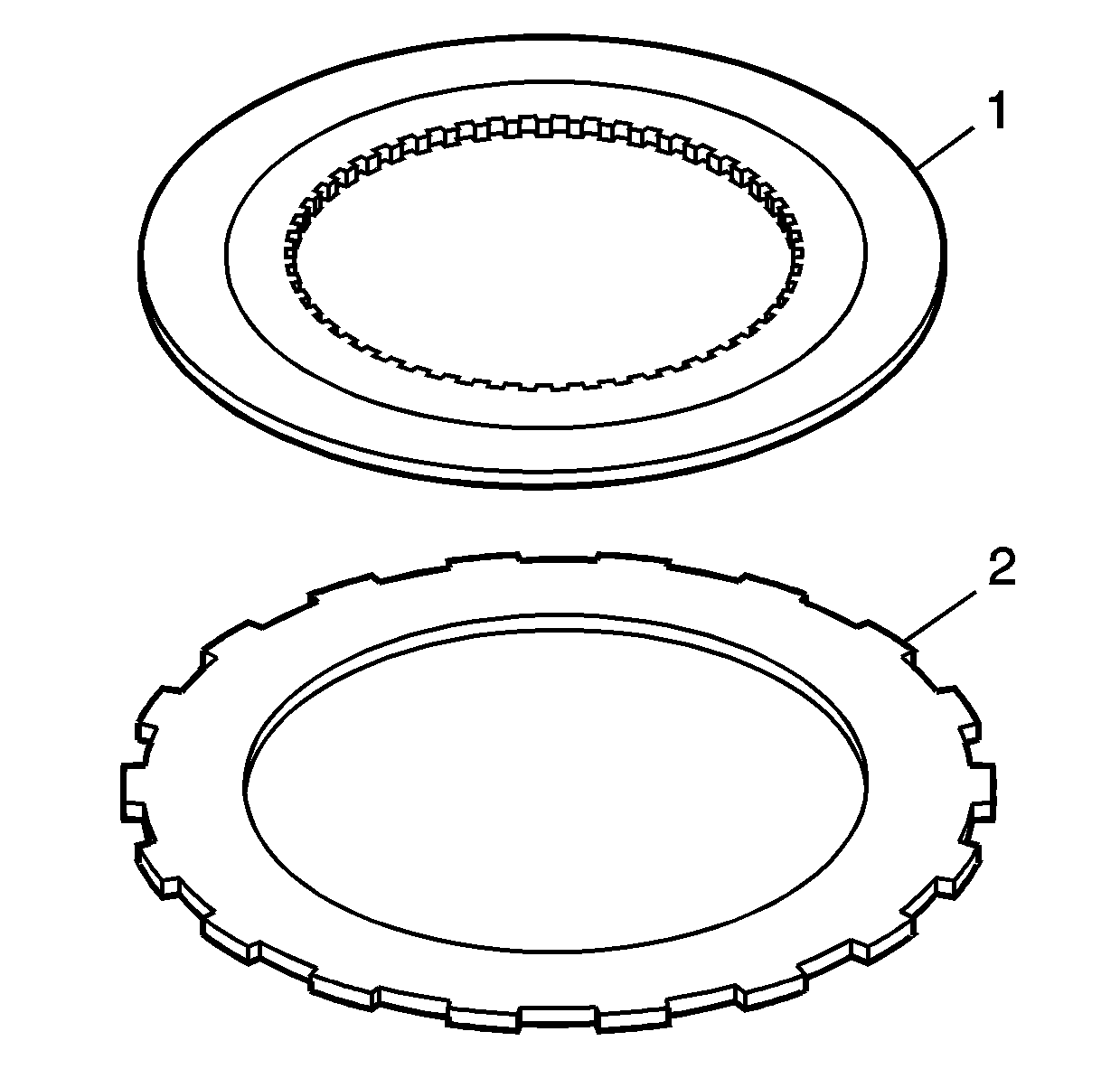
- Do not clean the inner clutch discs (1) and outer clutch discs (2) in cleaning solvent.
- Inspect the clutch discs for the following conditions:
| • | Grooved or scored friction material |
- Replace the clutch discs if any of the above conditions are found.
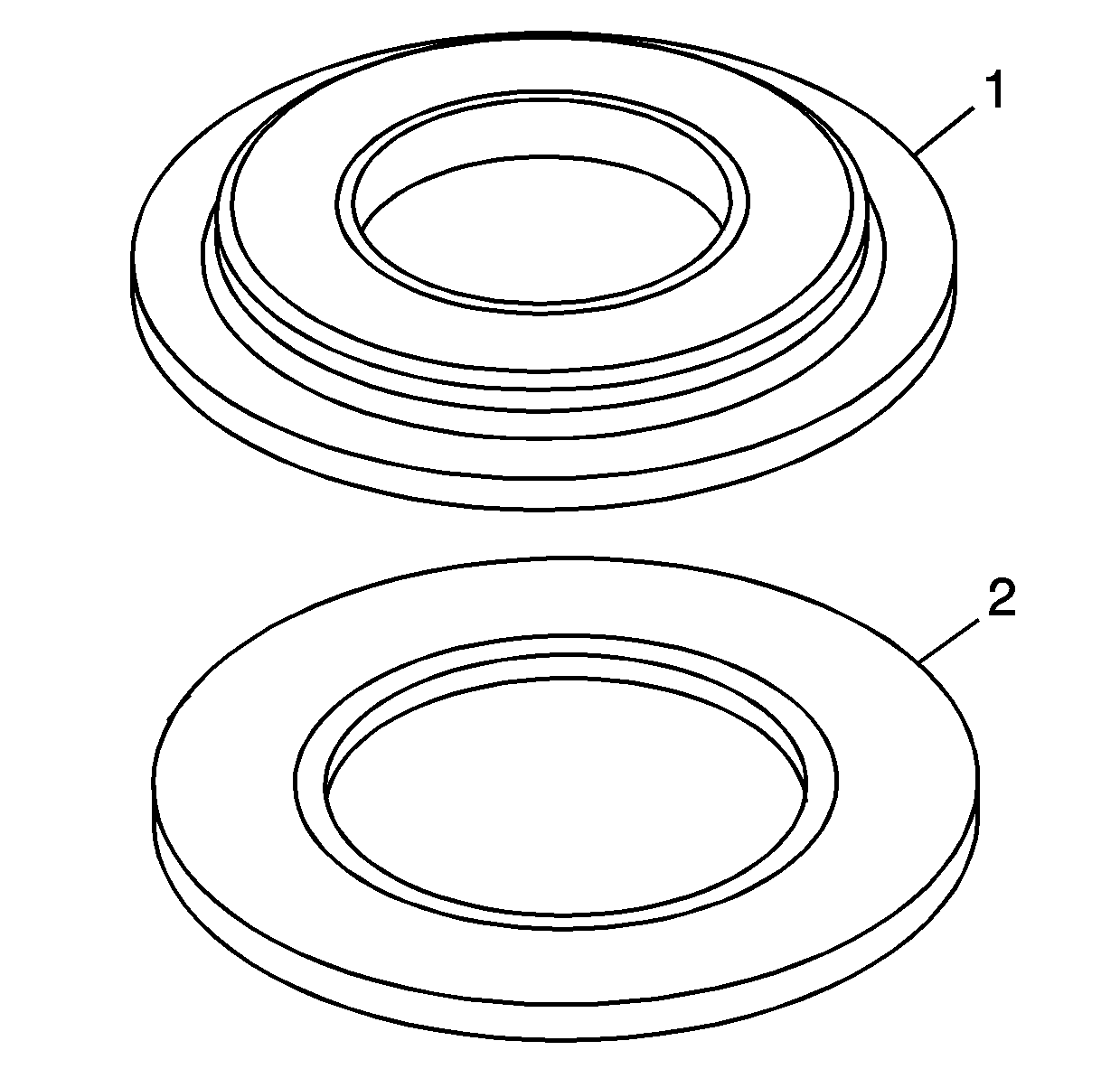
- Clean the clutch inner plate (1)
and the clutch pressure plate bearing (2) in cleaning solvent and air dry.
- Inspect the pressure plate bearing for roughness and smooth movement.
- Replace the pressure plate bearing if damaged or worn.
- Inspect the clutch inner plate inner bushing for wear or damage.
- Inspect the clutch inner plate for wear.
- Replace the clutch inner plate if any of the above conditions are found.
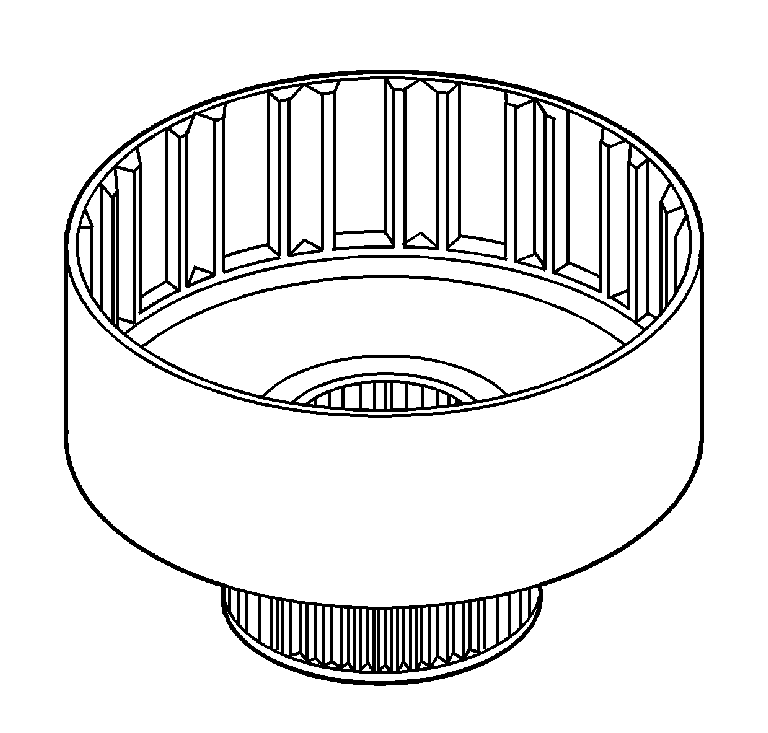
- Clean the clutch housing, with the bearing, in cleaning solvent.
- Air dry and ensure all solvent is removed from the bearing.
- Inspect the bearing for wear or damage.
- Inspect the clutch housing disc teeth for excessive wear. Excessive wear can be identified by the steps in the teeth, which prevents the clutch disc from moving freely.
- Replace the clutch housing if the bearing is faulty or if the clutch disc teeth are worn. The bearing is not serviced separately.
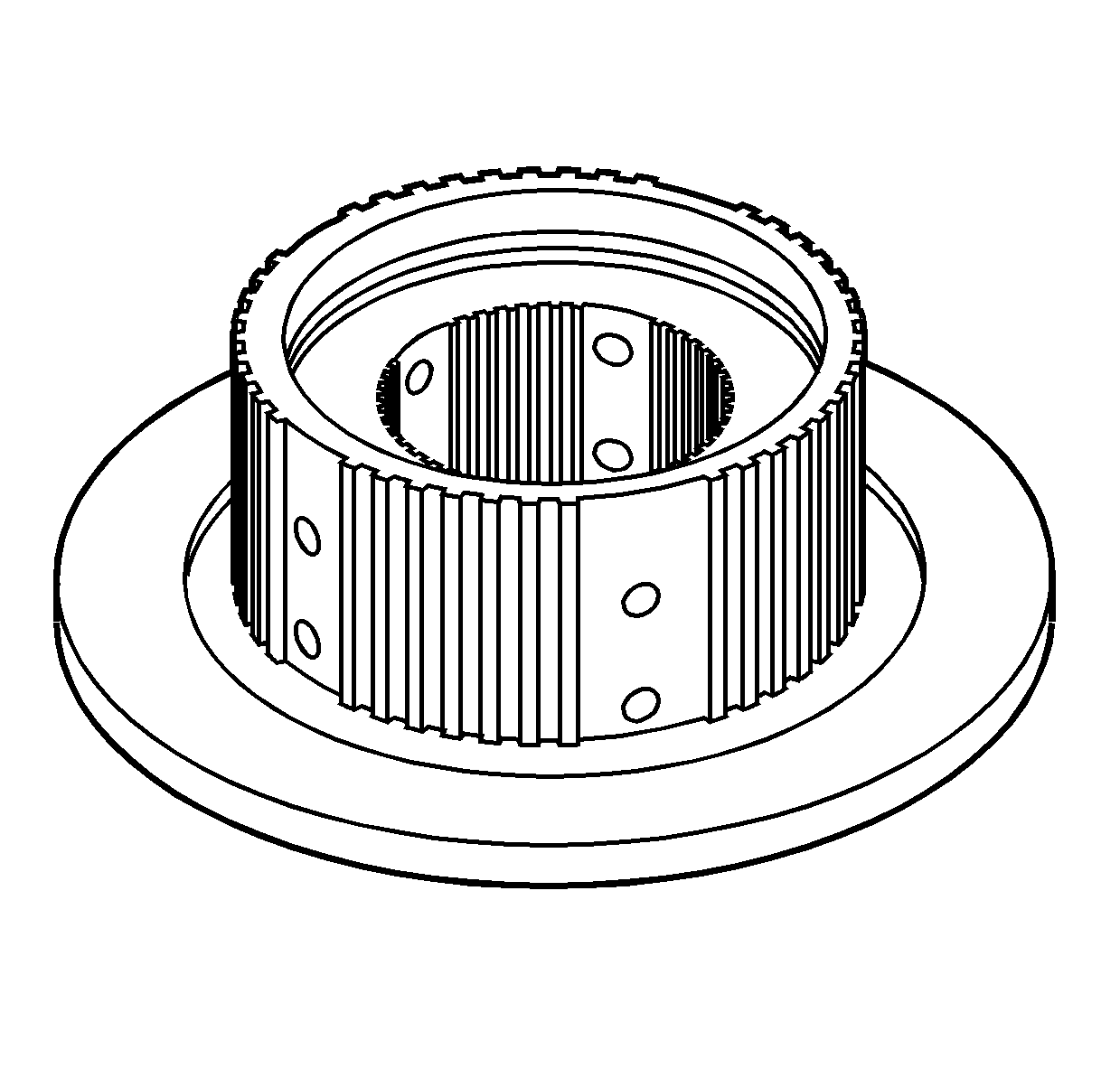
- Clean the clutch hub in cleaning solvent and air dry.
- Inspect the inner splines of the clutch hub for wear or damage.
- Inspect the rear output shaft to the clutch inner hub for excessive looseness.
- Inspect the clutch hub teeth for excessive wear. Excessive wear can be identified by the steps in the teeth, which prevents the clutch disc from moving freely.
- Replace the clutch hub if any of the above conditions are found.
High/Low Planetary Carrier
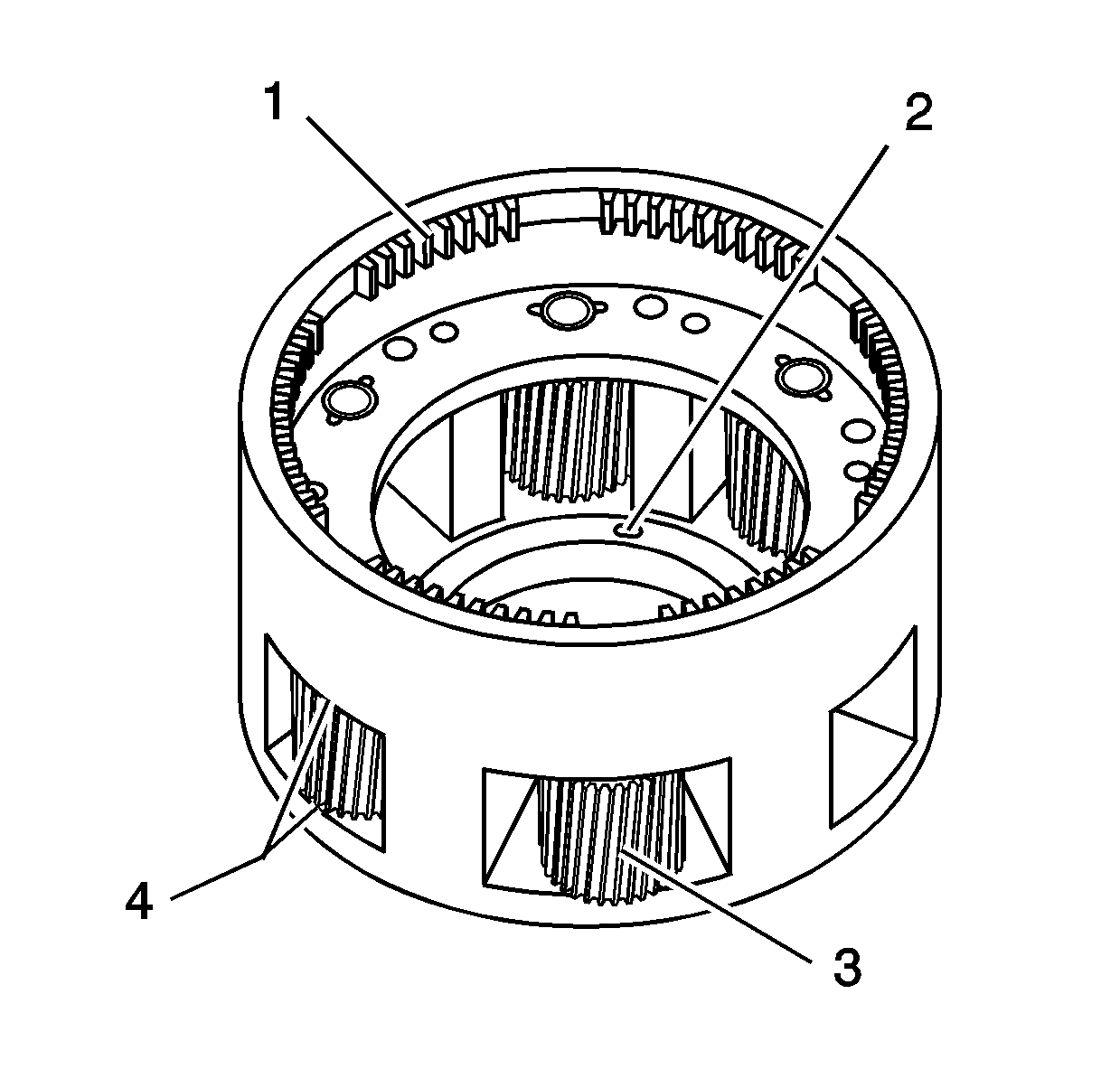
- Clean the high/low planetary carrier in cleaning solvent. Do not disassemble the
planetary carrier.
- Air dry and ensure all cleaning solvent is removed from the bearings in the planetary gears (3). Do not spin the planetary gears with compressed air.
- Inspect the planetary gears for chipped teeth.
- Inspect the planetary gears for debris embedded in the root of the teeth.
- Inspect for a washer (4) being on each side of the planetary gears.
- Inspect the low range teeth (1) for damage or excessive wear.
- Inspect the thrust washer surface (2) for scoring or excessive wear.
- Replace the high/low planetary carrier if any of the above conditions are found.
- Inspect the high/low planetary thrust washers for excessive wear or scoring.
- Replace the thrust washers if they are faulty.
Drive Chain and Sprockets
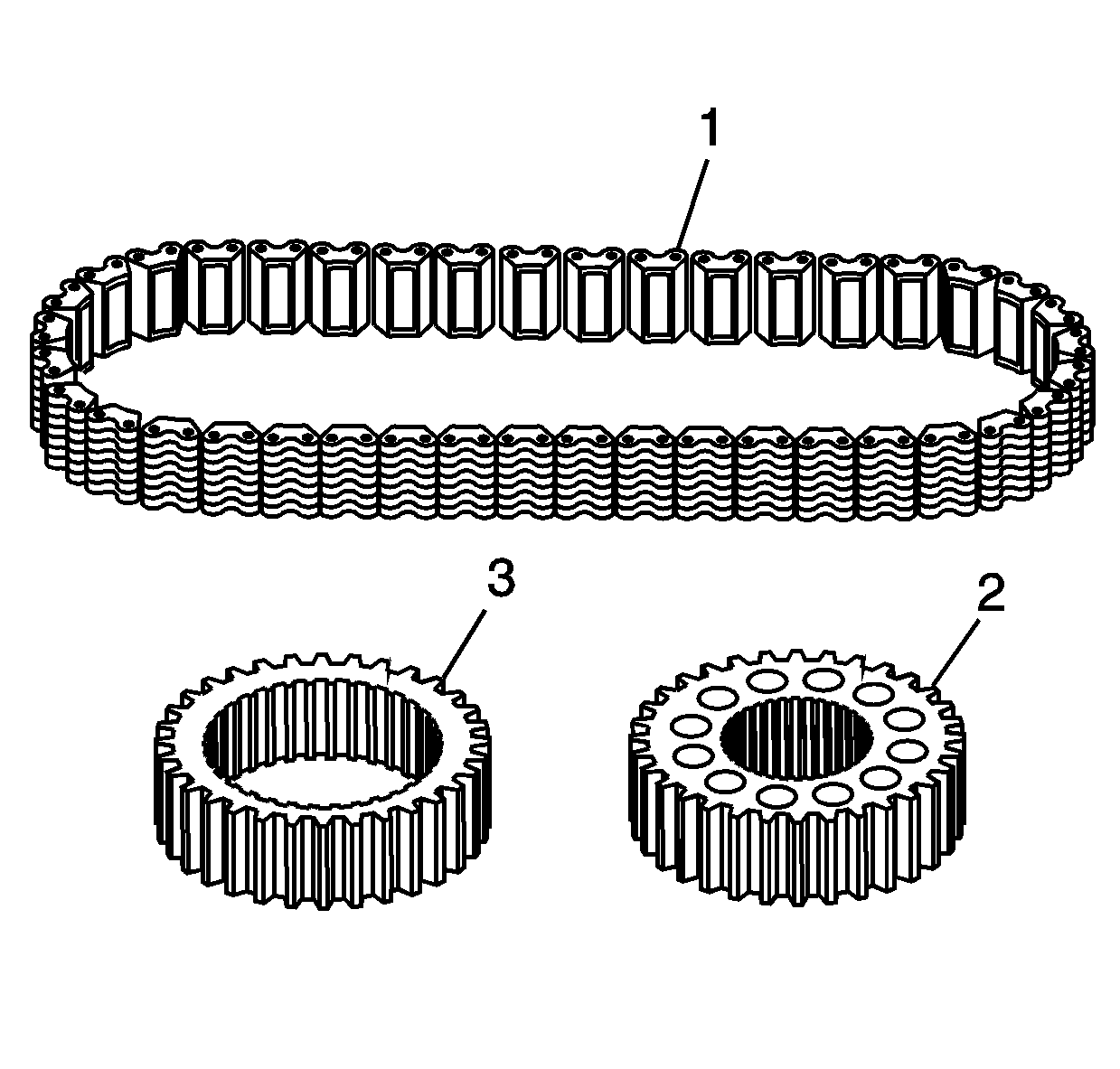
- Clean the drive chain (1), drive
sprocket (3), and driven sprocket (2) in cleaning solvent and air dry.
- Inspect the drive chain (1) for the following conditions:
| • | Debris embedded in the links |
- Replace the chain if any of the above conditions are found.
- Inspect the driven sprocket (2) and the drive sprocket (3) for the following conditions:
| • | Excessively worn gear surfaces |
| • | Slight wear marks are normal. |
| • | Debris embedded in the root of the teeth |
- Replace the sprocket if any of the above conditions are found. The chain and sprockets may be replaced separately.
Front Output Shaft
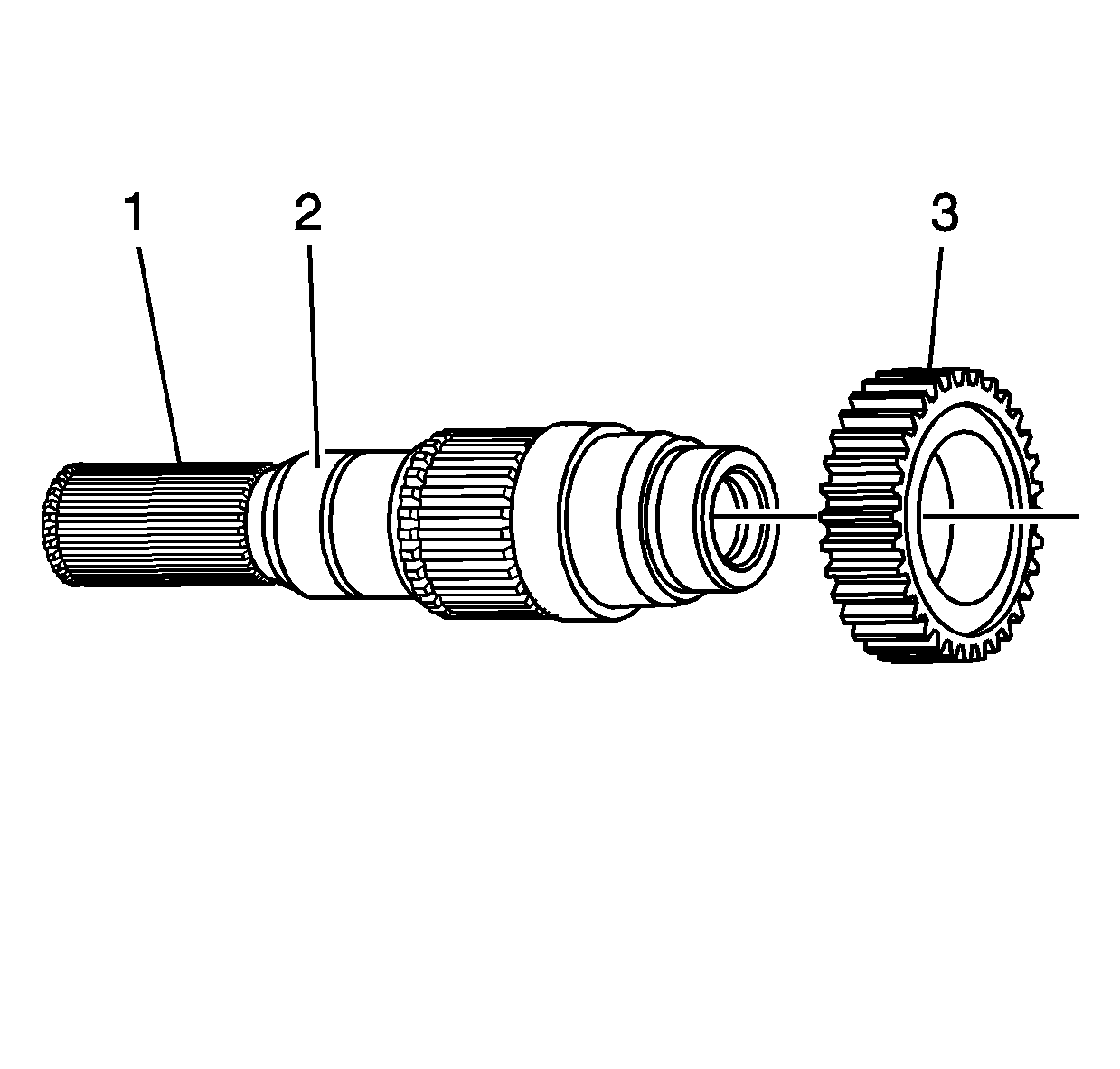
- Clean the front output shaft in cleaning solvent and air dry.
- Inspect the teeth on the speed sensor reluctor wheel (3) for damage.
- Replace the speed sensor reluctor wheel if damaged.
- Inspect the front output shaft seal surface (2) for wear or damage.
- Inspect the front output shaft splines (1) for damage.
- Replace the front output shaft if damaged.
Input Gear
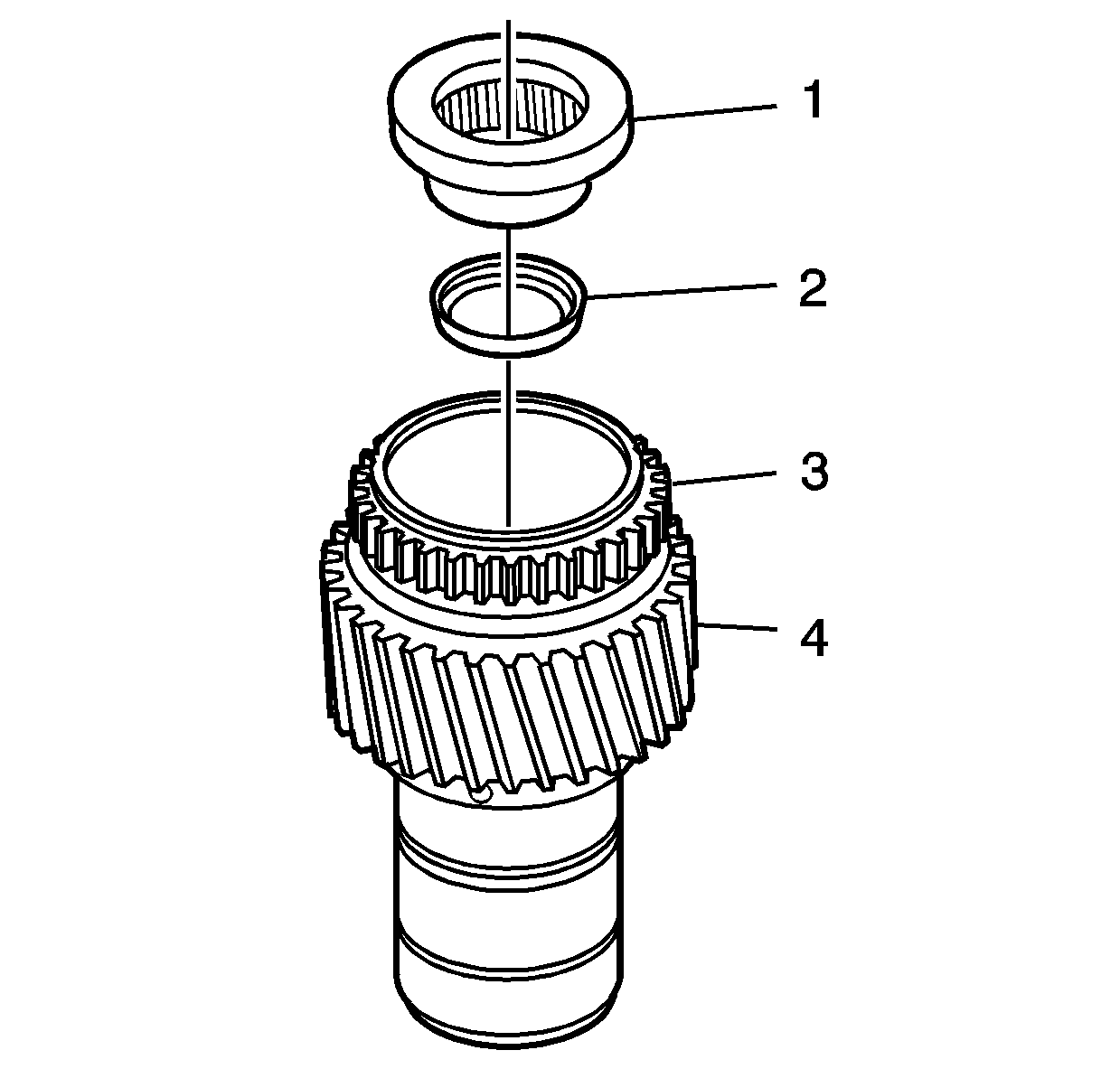
- Clean the input gear, with thrust bearing, in cleaning solvent.
- Air dry and ensure all solvent is removed from the thrust bearing.
- Inspect the thrust bearing (1) for the following conditions:
- Replace the input gear thrust bearing if any of the above conditions are found. Refer to
Transfer Case Disassemble
and
Transfer Case Assemble
.
- Inspect the bore seal (2) for damage.
- Replace the bore seal if it is damaged. Refer to
Transfer Case Disassemble
and
Transfer Case Assemble
.
- Inspect the input gear engagement teeth (3) for chips.
- Inspect the input gear for broken or damaged planetary teeth (4).
- Inspect the input gear for debris embedded in the root of the teeth.
- Replace the input gear if any of the above conditions are found.
Shift System Components
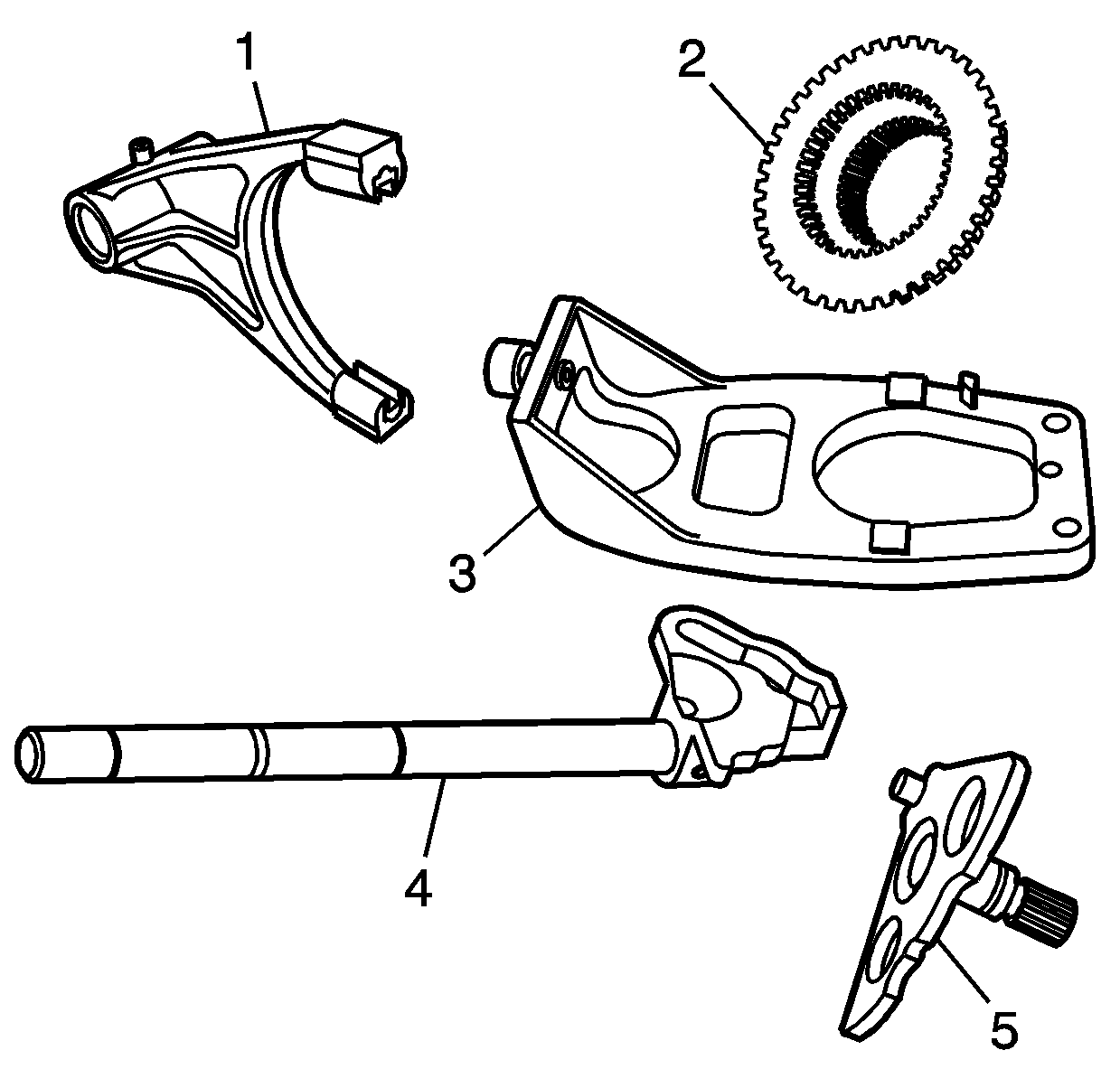
- Clean the following shift system components in cleaning solvent and air dry:
| • | The high/low shift fork (1) |
| • | The shift fork shaft and shift detent lever (4) |
| • | The control actuator lever shaft (5) |
- Inspect the range sleeve for being chipped and for excessive worn teeth.
- Replace the range sleeve if the teeth are damaged or worn.
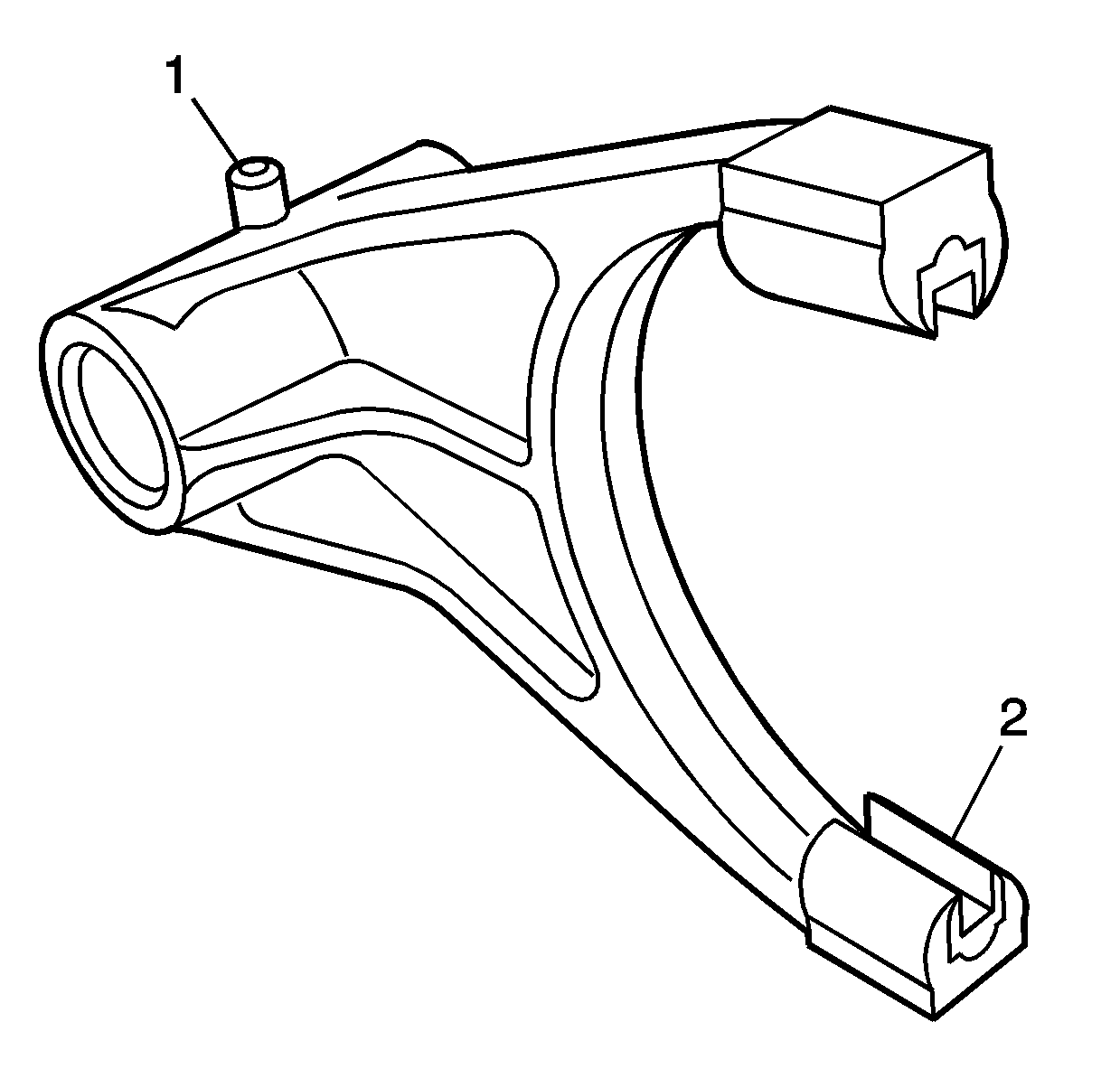
- Inspect the pads (2) on the shift fork for wear.
- Replace the shift fork if the pads are worn.
- Inspect the poppet (1) in the shift fork for proper operation.
| 6.1. | Slide the shift fork on to the shift rail. |
| 6.2. | Move the shift fork to engage the poppet into the groove. |
| 6.3. | Move the shift fork in both directions to ensure the poppet will disengage from the groove. |
- Replace the shift fork if the poppet is not operating properly.

- Inspect the clutch lever roller (1) for the following conditions:
- Inspect the clutch lever for worn wear pads (2).
- Inspect the clutch lever for wear at the pivot pin sockets (3).
- Replace the clutch lever if the above conditions are found.
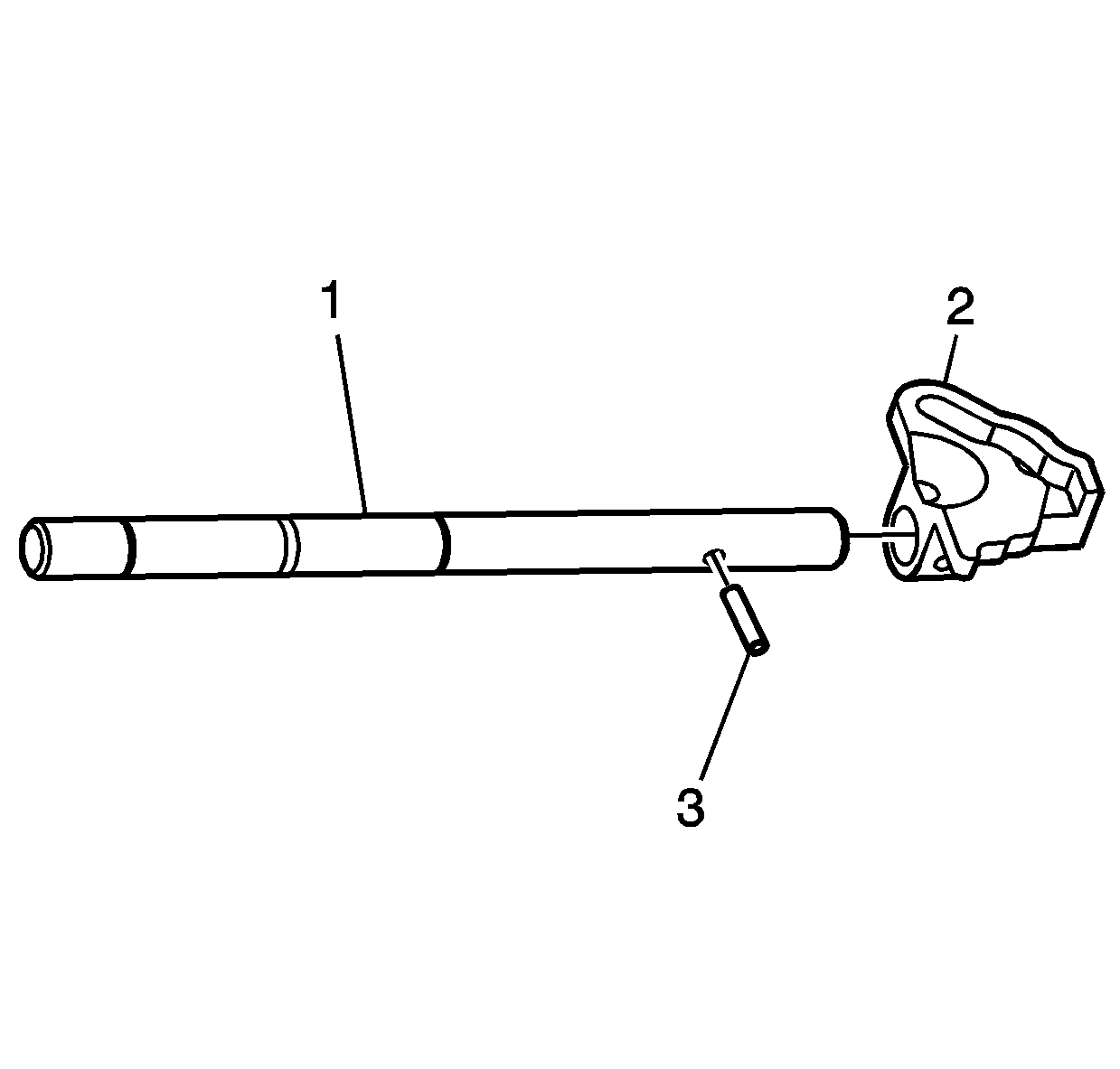
- Inspect the shift fork shaft at the
shift fork poppet groove for damage or wear.
- Inspect the shift fork shaft (1) for being bent.
- Inspect the shift detent lever (2) for wear.
- Replace the shift rail or the shift detent lever if the above conditions are found. Install a new roll pin (3) if the shift detent lever is removed from the shift fork shaft.
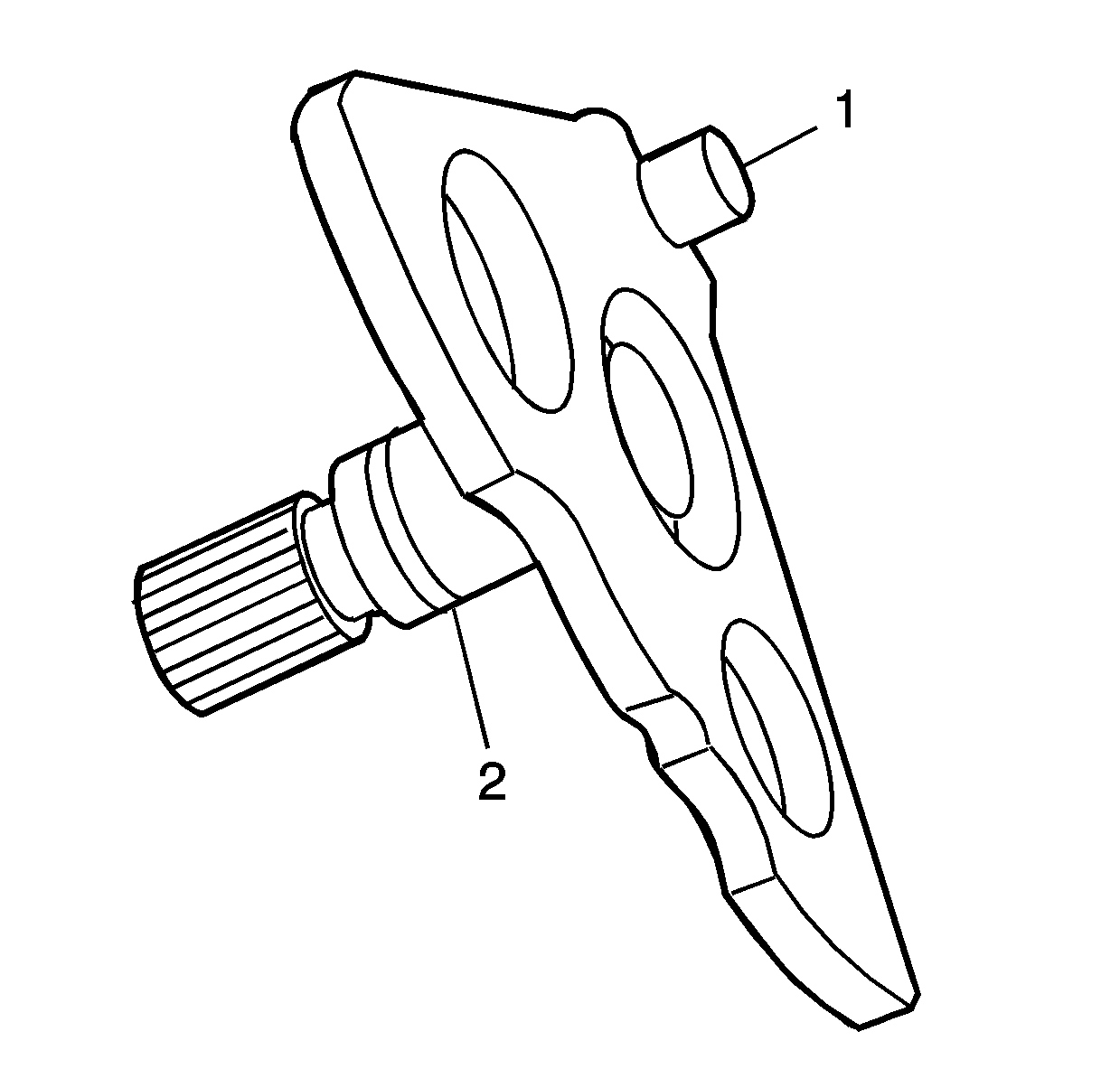
- Inspect the roller (1) on the control actuator
lever shaft for the following conditions:
- Inspect the bearing (2) and the seal surface on the control actuator lever shaft for the following conditions:
- Replace the control actuator lever shaft if any of the above conditions are found.


















